The guitarist rolls into Nashville with a crew of Les Pauls and Firebirds, a pair of 100-watters, and a fine spread of stomps.
Maestro Warren Haynes invited PG’s John Bohlinger to Nashville’s historic Ryman Auditorium, where they hang out after Gov’t Mule’s soundcheck and take a tour through his live rig. This Gibson-heavy collection has been a 40-year-work in progress for the guitarist, who has spent his career playing with David Allan Coe, Dickey Betts, The Allman Brothers, The Dead, leading Gov’t Mule, and much, much more.
New Gov't Mule Album Peace...Like A River out 6/16.
Brought to you by D’Addario XS Strings.
Chester
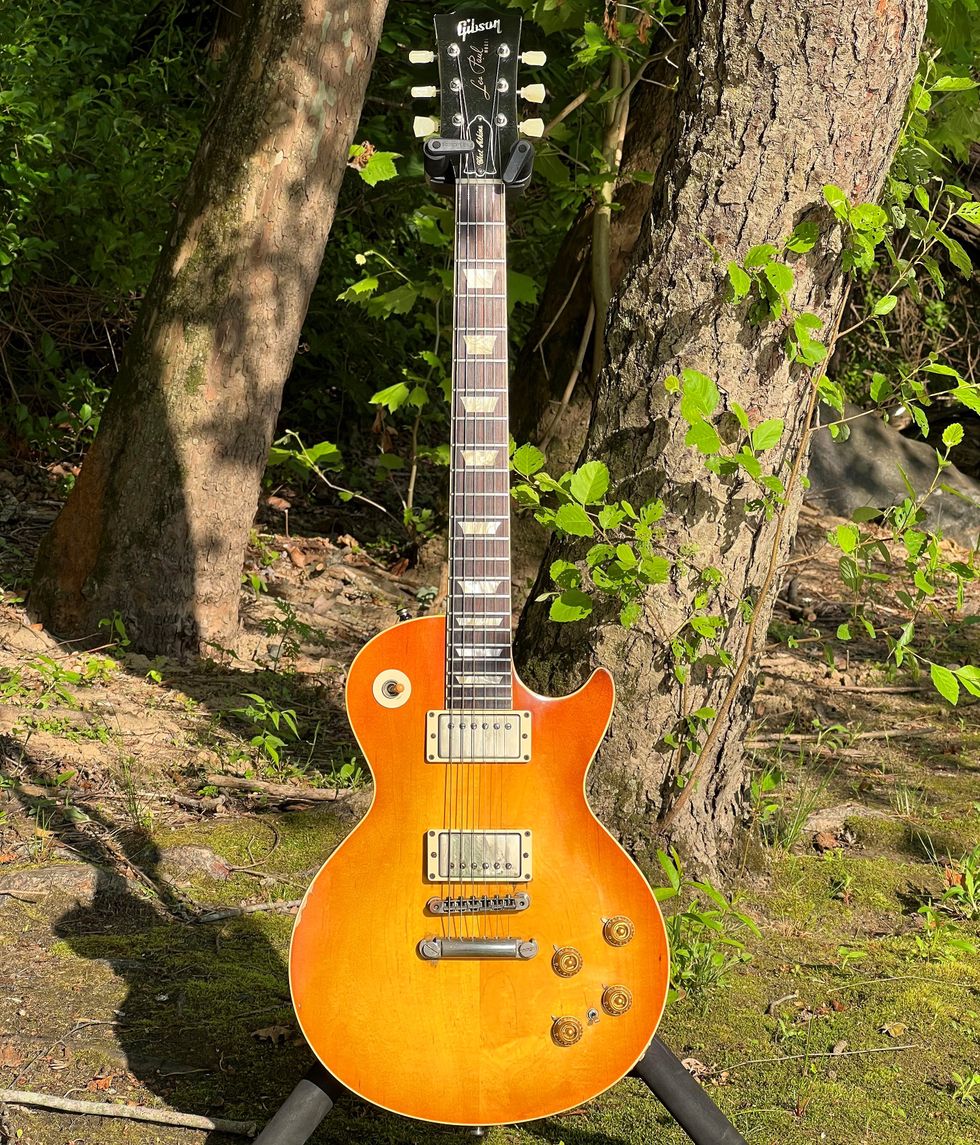
“Chester,” the guitarist’s own signature Gibson Les Paul, was inspired by a ’58 body and ’59 neck, and is loaded with Burstbucker pickups and a switchable buffered preamp.
Big Red Two
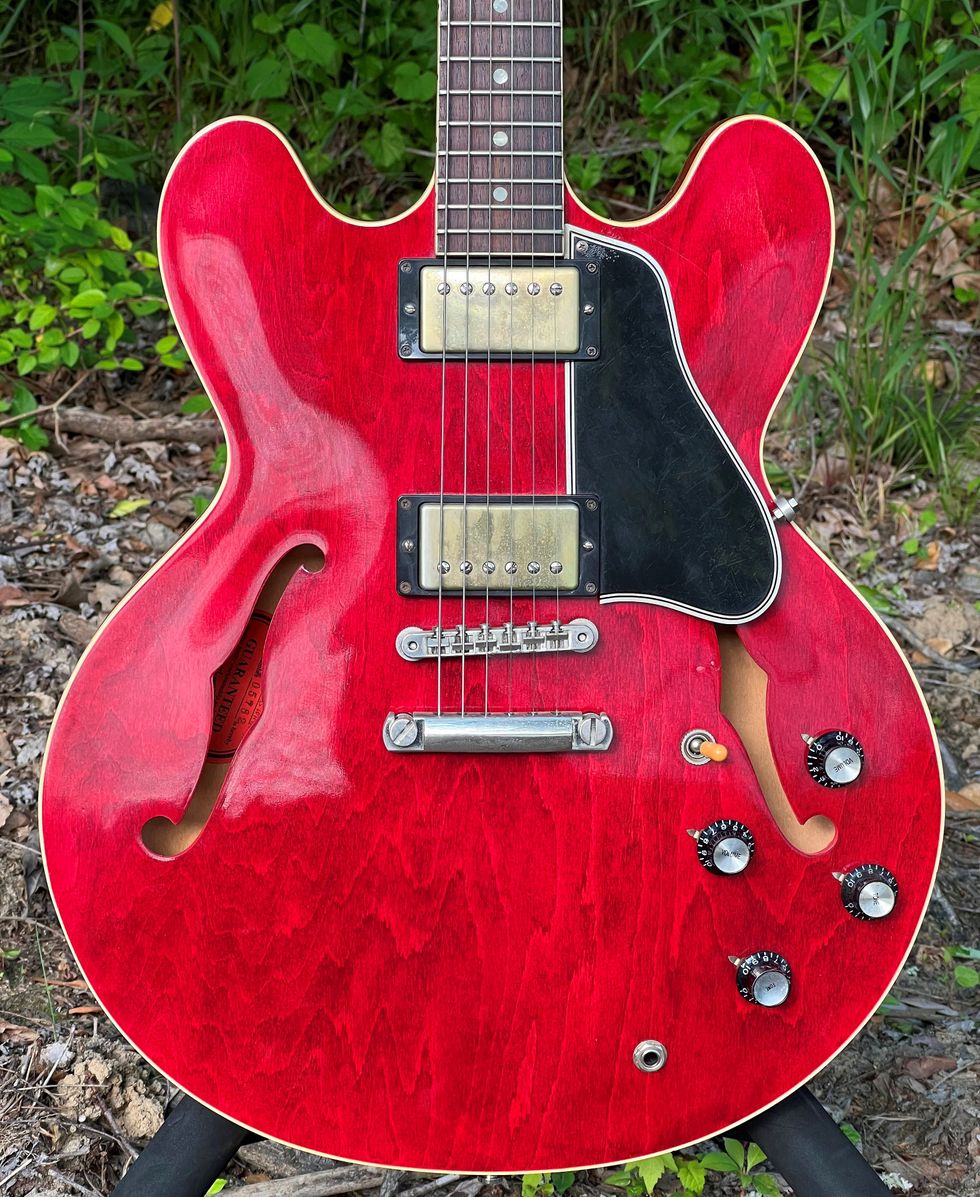
“Big Red Two” is another of Haynes’ signature models, this time an ES-335, which is a copy of the guitarist’s PAF-loaded ’61 model.
Almost Firewood
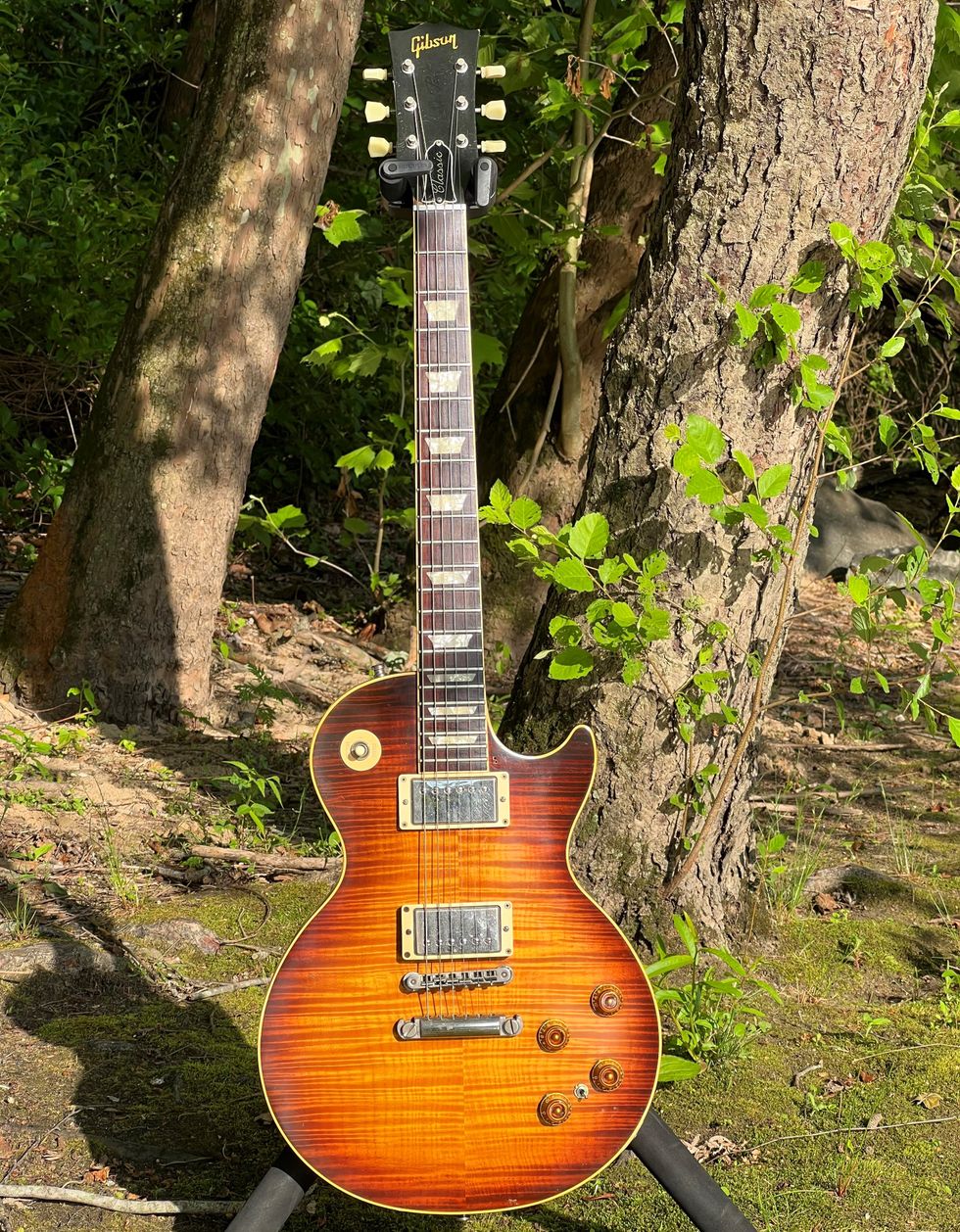
Thanks to a pair of extra screw holes that were a factory accident, this flame-bedazzled tobacco ’burst LP was marked as a flaw and spent a couple years hanging around, unable to be sold. But back when he was in the Allman Brothers, Haynes visited Gibson and fell in love. He installed Classic ’57 pickups and he’s toured with it since.
The Dead Bird
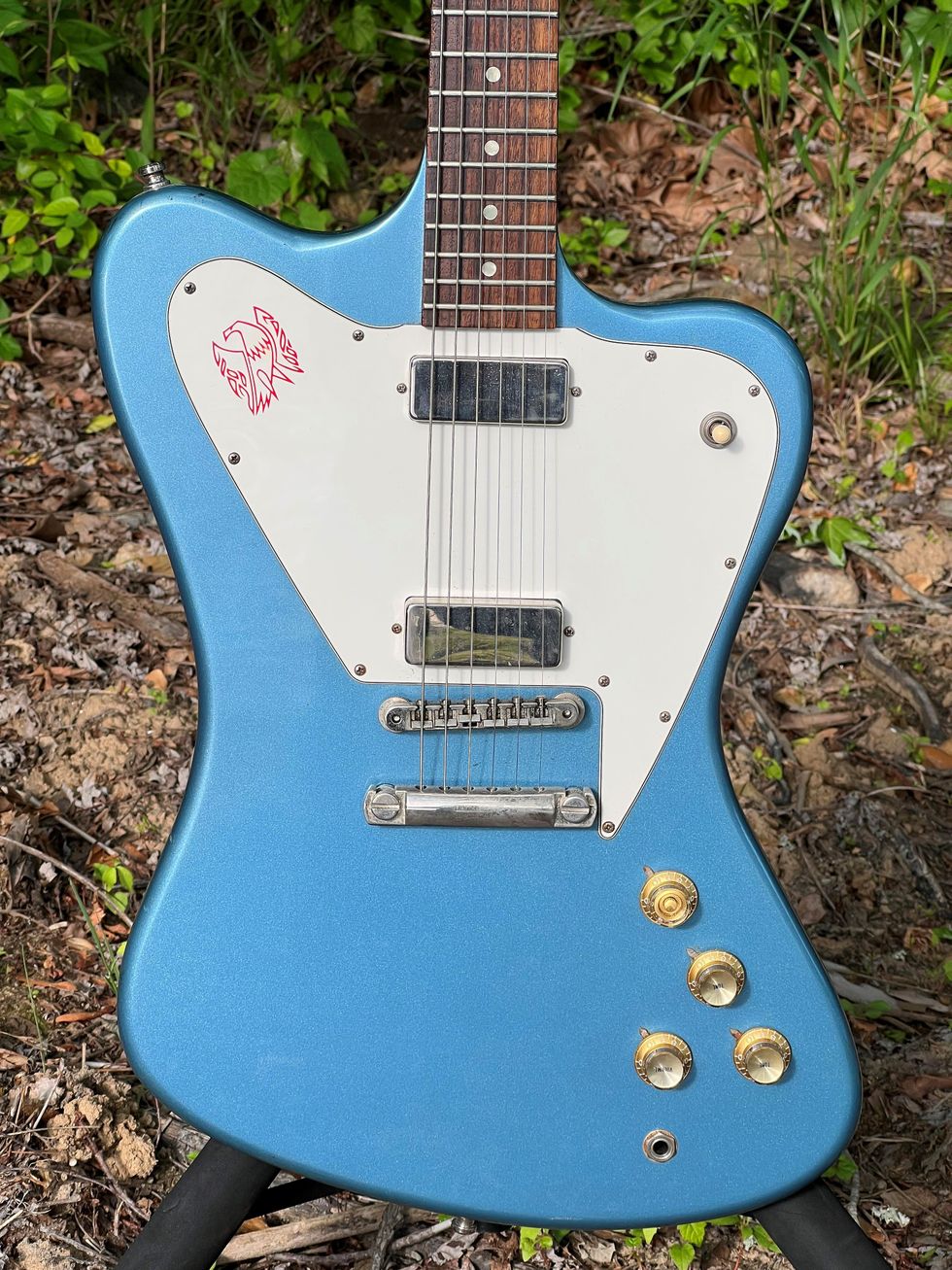
Haynes picked up his blue mini-humbucker-loaded Gibson Firebird, “The Dead Bird,” when he was playing with the Grateful Dead in 2009 and says it “has a unique sound that’s somewhere between a Gibson and a Fender.”
Three's a Crowd
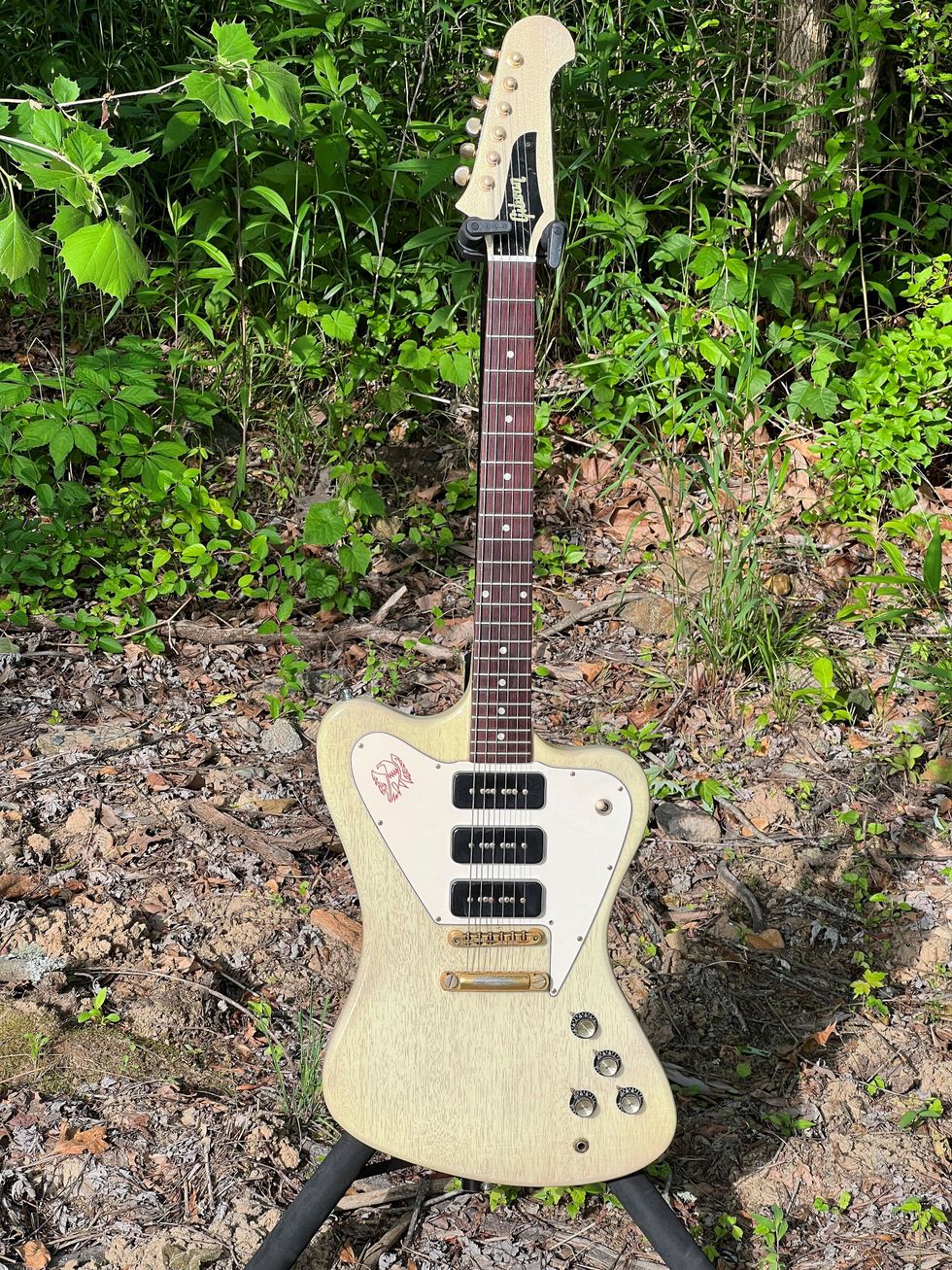
This Gibson Custom Shop Firebird is loaded with a trio P-90s and, like his other Firebird, stays tuned down a half step. Each of Haynes’ 6-strings are strung with GHS Nickel Rockers .010–.046.
Dirty Dozen
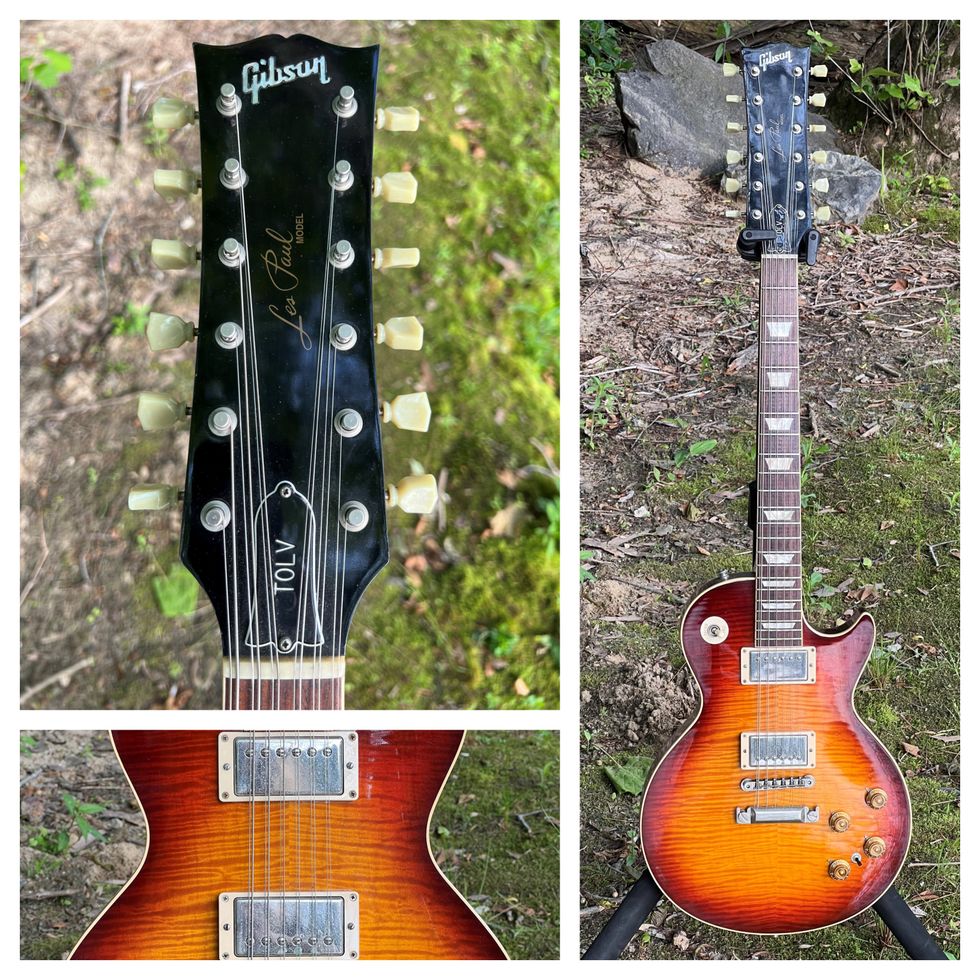
It takes a massive headstock to fit a dozen strings on this Les Paul. Haynes keeps “Railroad Boy” tuned to drop D, and he uses its coil-tap switch for extra flexibility when needed.
100 Watts for Might
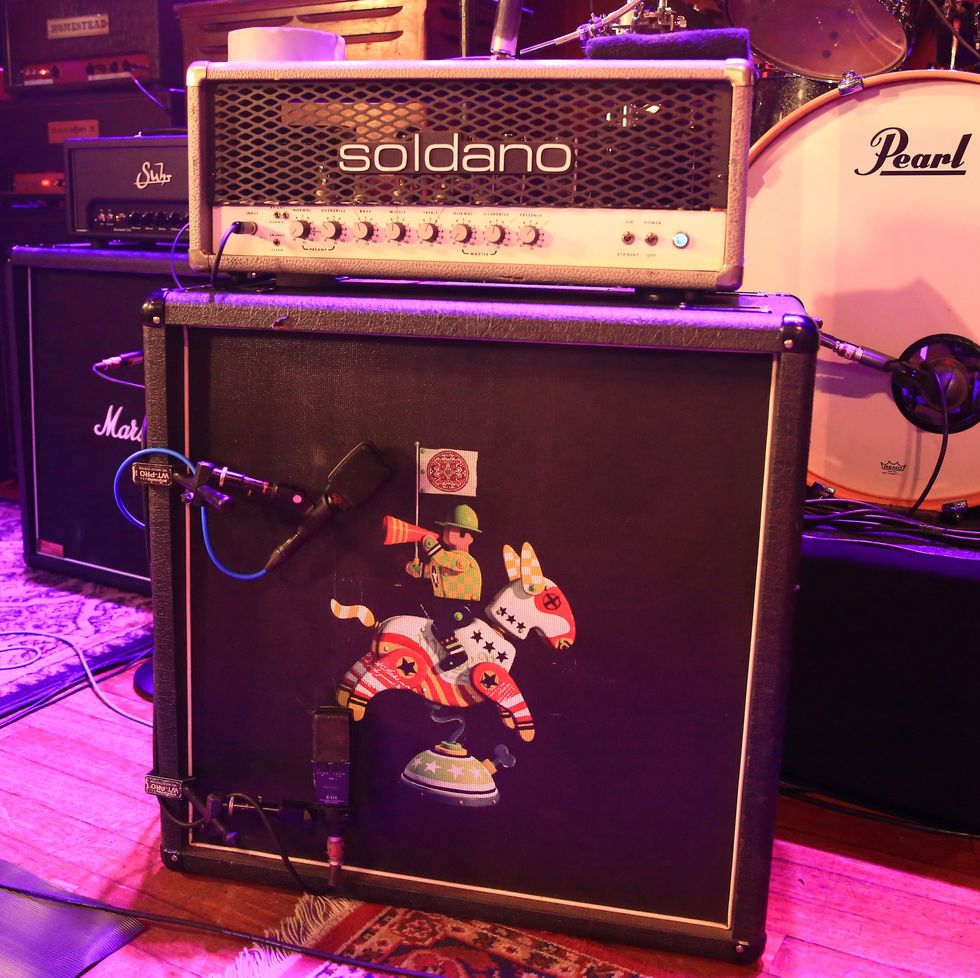
Haynes runs a two-amp rig and calls on each at different times—never both at once. On one side is his Soldano SLO-100, which the guitarist had modded by Mike Soldano to boost low-mid response at his preferred low preamp volume settings. The 100-watt head is paired with a Marshall cab loaded with a quartet of 75-watt Celestions.
Home Is Where the Tone Is
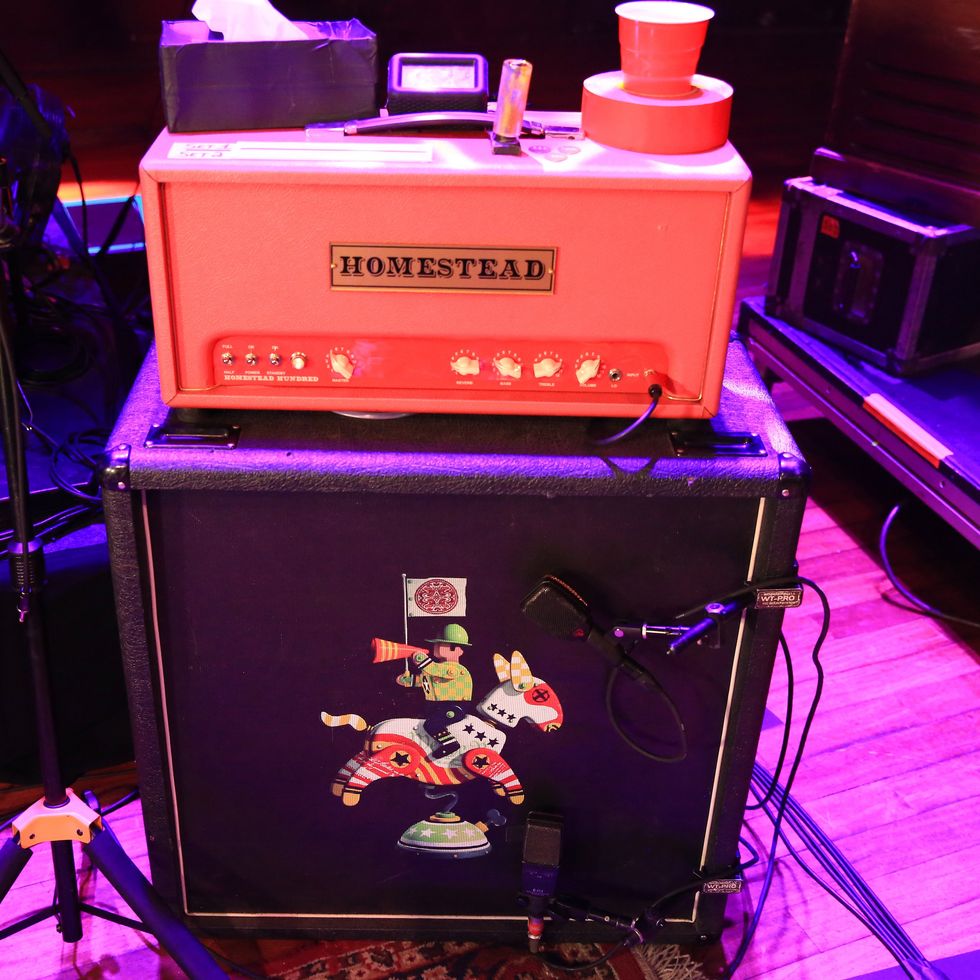
On the other side is a 100-watt Homestead head that Haynes runs into a 4x12 cab loaded with 25-watt Celestion Greenbacks.
Warren Haynes' Pedalboard
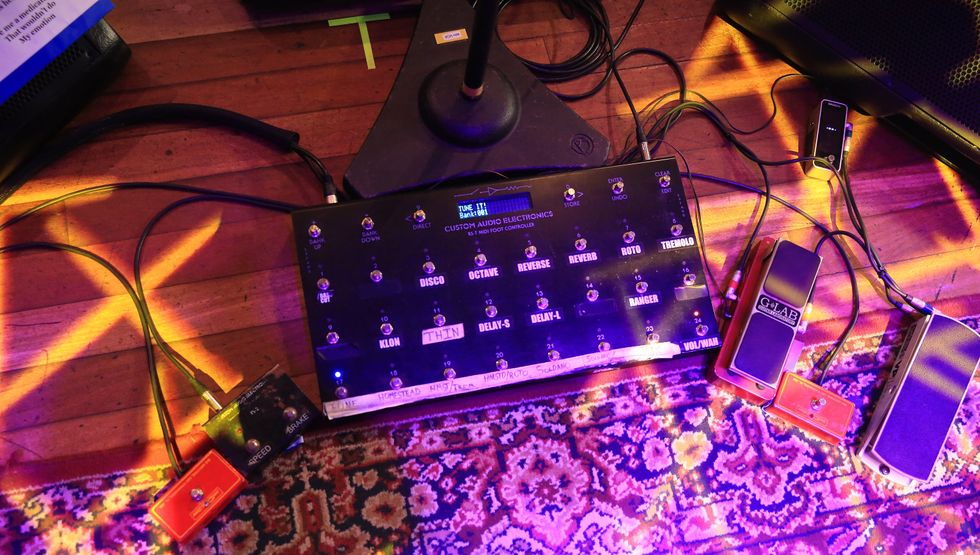
Haynes uses a Custom Audio Electronics MIDI foot controller to access most of his pedals, which live in an offstage rack. His Ernie Ball JP Jr. volume pedal, signature G-Lab WOWEE Wah WH-1, and a D’Addario tuner sit alongside.

On one shelf of Haynes’ rack sits a gold Klon Centaur, Diaz Texas Ranger treble booster, Boss OC-2 Octave, Emma DiscumBOBulator envelope filter, and a CAE Super Tremolo.
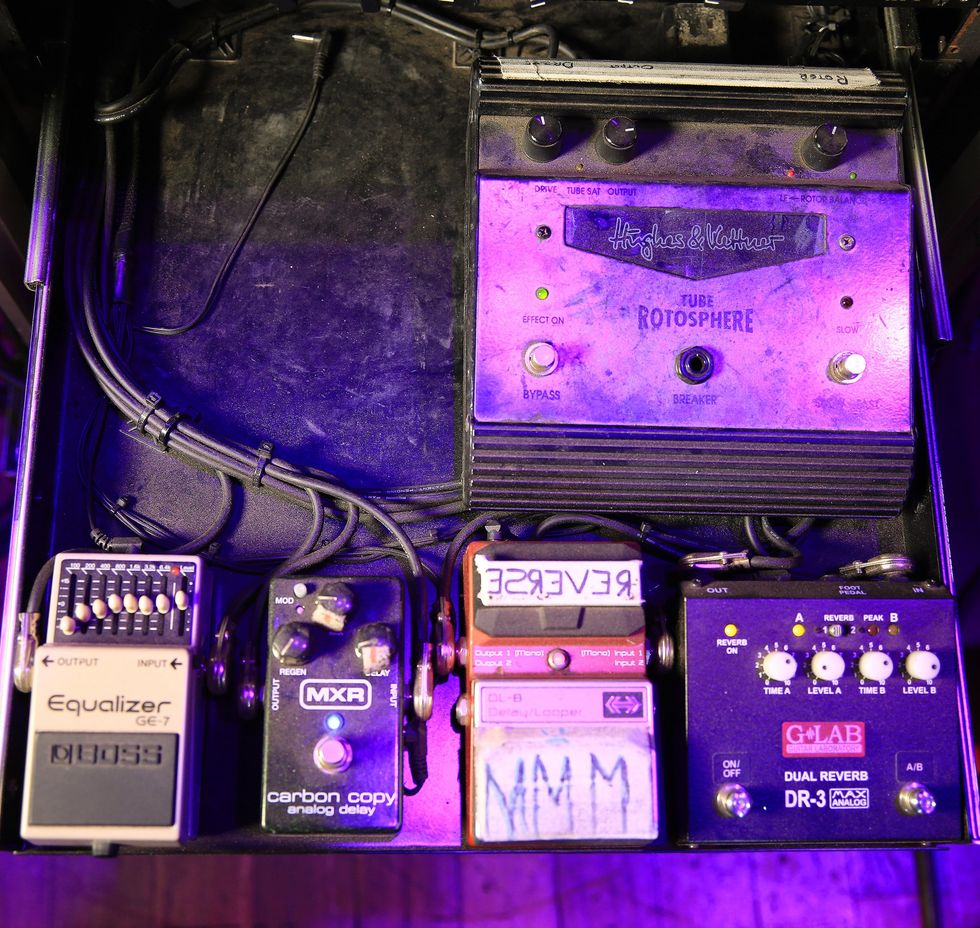
And on the other is a Hughes & Kettner Rotosphere, G-Lab DR-3 Dual Reverb, DigiTech Hardwire DL-8 Delay Looper, MXR Carbon Copy, and a Boss GE-7 Equalizer.
![Rig Rundown: Gov't Mule's Warren Haynes [2023]](https://www.premierguitar.com/media-library/rig-rundown-gov-t-mule-s-warren-haynes-2023.jpg?id=34115762&width=1200&height=675)


![Rig Rundown: AFI [2025]](https://www.premierguitar.com/media-library/youtube.jpg?id=62064741&width=1245&height=700&quality=70&coordinates=0%2C0%2C0%2C0)


![Devon Eisenbarger [Katy Perry] Rig Rundown](https://www.premierguitar.com/media-library/youtube.jpg?id=61774583&width=1245&height=700&quality=70&coordinates=0%2C0%2C0%2C0)




































